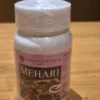Palasa
|
Botanical Name |
Butea Monosperma |
|
Family |
Fabaceae |
|
Sanskrit |
Palasa |
|
English |
Forest Tree |
|
Hindi |
Kankeri,Chalacha |
|
Kannada |
Muttuga |
|
Malayalam |
Palisin,Somat |
|
Telugu |
Moduga Chettu |
|
Tamil |
Paras |
|
Marathi |
– |
Distribution
It is globally distributed throught india
|
Parts Used |
Stem Bark, Flowers, Seeds, Gum |
|
Dose |
Swarasa-50-100ml,Choorna-3-6gm |
Chemical Constituents
Butin, glycine, monospermin, palasonin
Ayurvedic Properties
|
Quality (Guna) |
Laghu, Snighda |
|
Taste (Rasa) |
Katu, Tikta |
|
Metabolism (Vipaka) |
Katu |
|
Potency (Virya) |
Ushnam |
|
Impact (Prabhava) |
Krimighna, Grahani |
Pharmacological Action
- Vata-kaphahara
- Dipana
- Grahi
- Krimghna
- Its flowers are tonic and nutritive
- It is anthelmintic used in intestinal worms
- It leaves are astringent
- It also contain diuretic property
Therapeutic Uses
Slipada, krimi, gulma, grahani, arshas, pumsavana, pliha roga
Some Of The Common Formulations
- Palasakshara taila
- Kumkumadi taila
- Vanga basma




